Diffusion/Osmosis, Photosynthesis/Cellular Respiration, Mitosis
advertisement
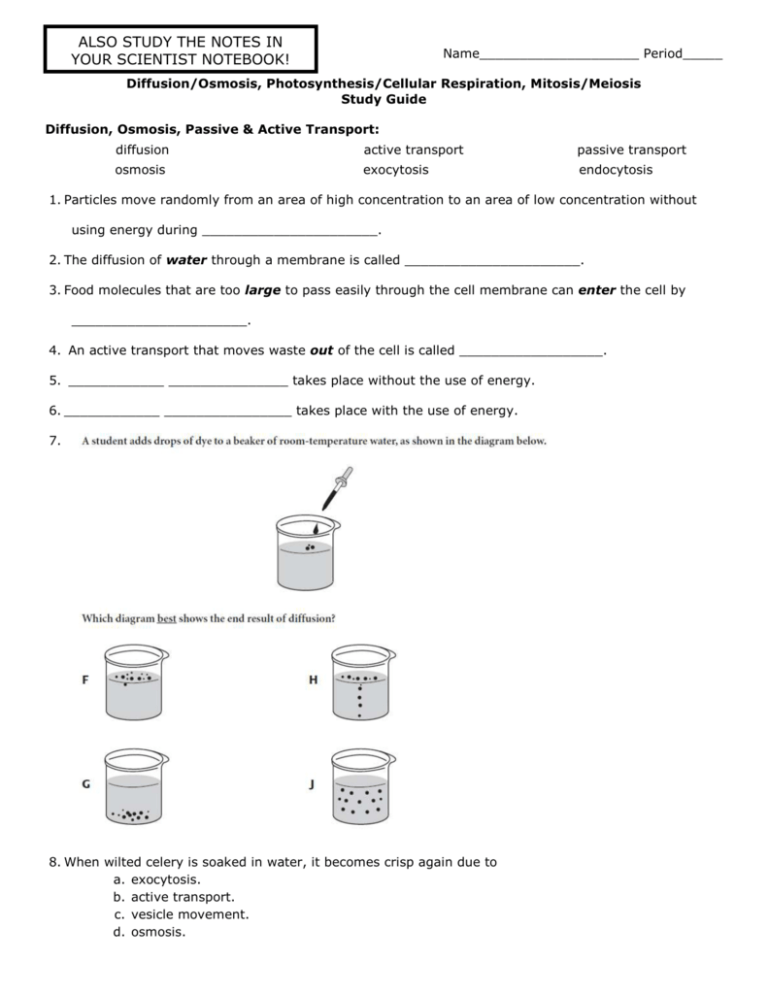
ALSO STUDY THE NOTES IN YOUR SCIENTIST NOTEBOOK! Name____________________ Period_____ Diffusion/Osmosis, Photosynthesis/Cellular Respiration, Mitosis/Meiosis Study Guide Diffusion, Osmosis, Passive & Active Transport: diffusion active transport passive transport osmosis exocytosis endocytosis 1. Particles move randomly from an area of high concentration to an area of low concentration without using energy during ______________________. 2. The diffusion of water through a membrane is called ______________________. 3. Food molecules that are too large to pass easily through the cell membrane can enter the cell by ______________________. 4. An active transport that moves waste out of the cell is called __________________. 5. ____________ _______________ takes place without the use of energy. 6. ____________ ________________ takes place with the use of energy. 7. 8. When wilted celery is soaked in water, it becomes crisp again due to a. exocytosis. b. active transport. c. vesicle movement. d. osmosis. Photosynthesis Name____________________ Period_____ 9. Plants produce their own food by the process of ______________________. 10. What are the reactants and products of photosynthesis? Write the words and chemical equation. 11. Why does a plant need to produce glucose? a. in order to turn green c. in order to move b. in order to obtain energy d. in order to get sunlight 12. Where does photosynthesis occur? 13. Explain why many green plants could survive in a world without mammals, but mammals could not survive in a world without green plants. Cellular Respiration 14. Cellular respiration allows an organism to get energy from a. sunlight. c. water. b. oxygen. d. food. 15. Explain how oxygen is obtained by most complex organisms and then used during cellular respiration. 16. This figure best represents what important cell process? a. photosynthesis b. osmosis c. fermentation d. cellular respiration Name____________________ Period_____ 17. What are the reactants and products of cellular respiration? Write the words and chemical equation. 18. What is fermentation (plan B)? Mitosis & Meiosis: 19. Why do cells need to produce new cells? 20. What is the result of mitosis? 21. The process that produces sex cells is called _______________. 22. What cells are produced during asexual cell reproduction? 23. How are sex cells different from other human cells? 24. How many cells are produced during meiosis? Why? 25. What are homologous chromosomes? 26. ________ ____________ is the life cycle of a cell. 27. What is the difference between sexual and asexual reproduction? (Hint: # of parents) 28. Fill out chart: Stage of Mitosis Description DNA copies; Centrioles copy Chromosomes condense into chromatids; nuclear membrane breaks apart Chromatids line up in the center of the cell and attach to the spindle fibers Chromatids are pulled apart to opposite ends of the cell Two new nuclei form around chromosomes; chromosomes unwind Cytoplasm divides; two new cells are produced Drawing of each stage Name____________________ Period_____ 28. 29. Name three types of asexual reproduction, describe each, & give an example of an animal that goes through each. 30. Female sex cells are called ______________. 31. Male sex cells are called _______________. Eggs and sperm are formed by ________________. How Animals Obtain Oxygen 32. Name three ways Animals can obtain oxygen and give an example of an animal or type of animal that obtains oxygen that way.
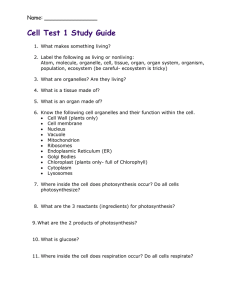

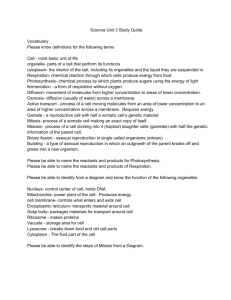



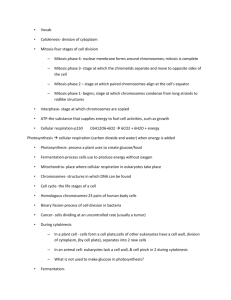
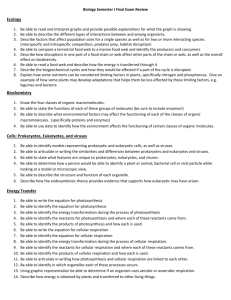
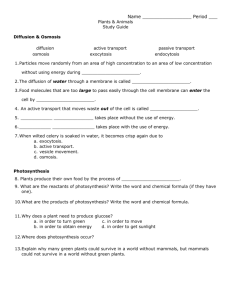
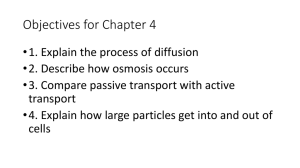
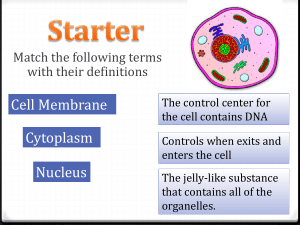
![Unit 1 Flashcards [Biochemistry]](http://s3.studylib.net/store/data/009271654_1-35a16c23e7f5950979b14d5b44b6987d-300x300.png)